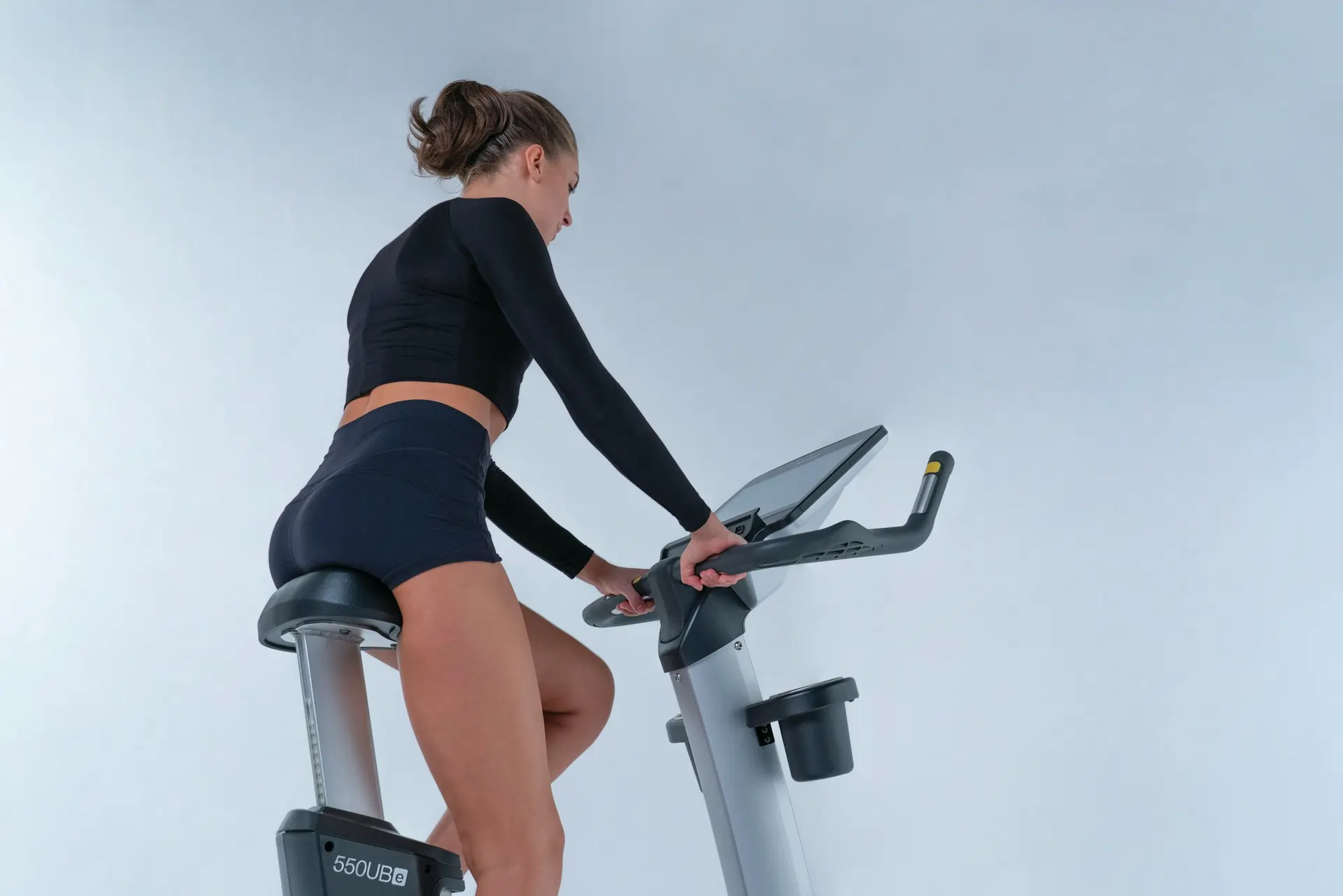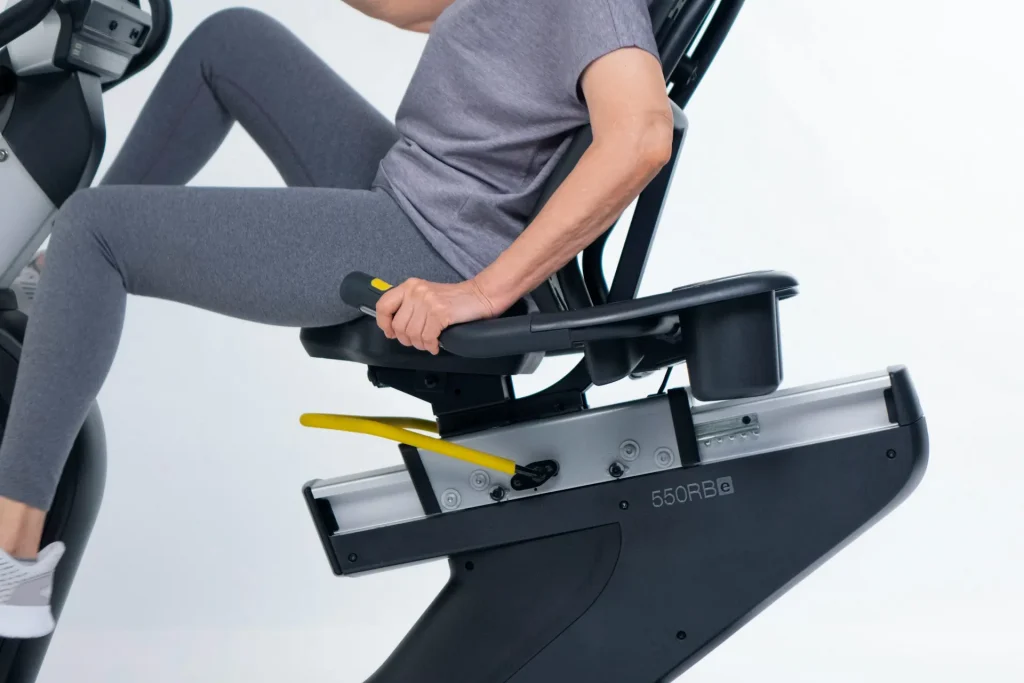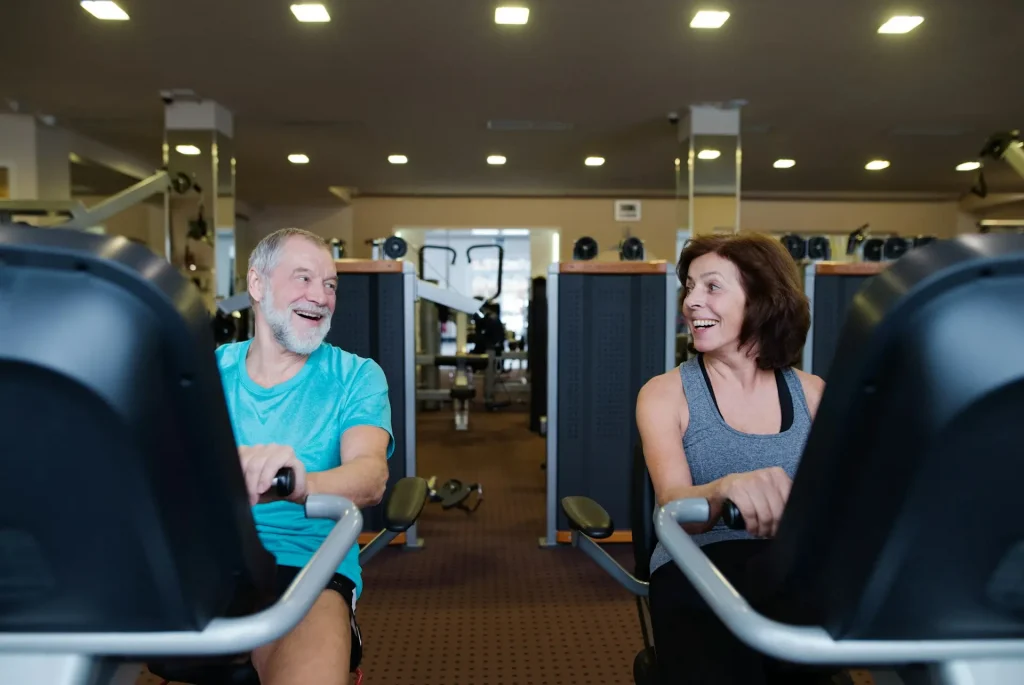
Are Upright Bikes Better Than Recumbent Bikes?
When setting up your home gym, it’s super important to understand the differences between upright and recumbent bikes—and how each can boost your fitness journey.
At Dynamo Fitness, we want you to get the most out of your workout experience, so we’re here to break down the key features, pros, and cons of each style.
This guide will help you decide which bike fits best with your weight loss goals, cardio workouts, and any injury concerns, especially if you’re managing lower back pain or joint issues.
Key Takeaways:
- Upright Bikes: With their compact design, upright bikes are perfect for small spaces and offer excellent lower body workouts. They engage muscles like your quadriceps, hamstrings, and glutes.
- Recumbent Bikes: These bikes provide a comfortable seat and lower impact on your joints, making them ideal for those with joint pain or injuries. They also offer fantastic back support, especially for seniors or anyone with mobility issues.
- Adjustability: Both bike types come with adjustable resistance levels, ensuring that they can cater to various fitness levels and goals—whether you’re into HIIT or steady-state cardio.
Discover Your Perfect Cardio Workout
Using the right stationary bike can completely transform your workout routine. At Dynamo Fitness, we know you value convenience, comfort, and results.

Whether you choose an upright or a recumbent bike, each style offers its own unique benefits. They help you boost your cardiovascular health, improve endurance, and burn fat—without putting undue stress on your joints.
Imagine the freedom of working out at home with equipment that’s tailored to your needs.
If you’re ready to take your training to the next level, exploring our wide range of cycling options is the perfect place to start.
Check out our upright bikes for the latest models designed with your busy lifestyle in mind.
Upright Bikes: 3 Key Features
Upright bikes have become a favorite choice for home workouts because they mimic the traditional cycling experience. They come equipped with adjustable resistance levels, customizable seats, and handlebars that let you dial in the perfect fit. This versatility ensures you get a tailored workout every time.
#1 Adjustable Resistance Levels
Adjustable resistance is a game changer. With a range of options—from magnetic to friction resistance—you can fine-tune your workout intensity to match your fitness goals.
Magnetic resistance, for instance, offers a smooth and quiet ride, while friction resistance gives you that classic cycling feel. Popular models often allow you to adjust settings with ease, helping you ramp up calorie burn and muscle engagement with every pedal stroke.
Top Tip: Experiment with different resistance levels during your workouts to discover which intensity best challenges you while still being comfortable.
#2 Customizable Seat + Handlebars
The ability to adjust the seat and handlebars means you can achieve the perfect riding position. This is crucial for maximizing comfort and minimizing the risk of injury. With the right ergonomic setup, you can maintain proper posture and ensure efficient pedaling throughout your workout.
Top Tip: Take time to adjust your bike before each session to ensure that your seating position supports your posture and helps prevent strain or injury.
#3 Compact Design
Upright bikes are ideal for small spaces, thanks to their slim profiles. They’re perfect for home gyms where every square inch counts.
Their compact design makes it easy to tuck one away when it’s not in use, keeping your workout space neat and organized.
Top Tip: Use vertical storage solutions and multi-functional furniture to make the most of your limited space without compromising on workout quality.
For more inspiration on small space setups, visit our home gyms.
Recumbent Bikes: 3 Key Features
Recumbent bikes are built for comfort. Their design prioritizes a reclined seating position that offers excellent back support and reduces joint impact. This makes them especially appealing for those with mobility issues or recovering from injuries.
#1 Comfortable Seat
One of the standout features of recumbent bikes is their comfortable seat. The ergonomic design supports your lower back and distributes your weight evenly, so you can enjoy longer workouts without discomfort. This comfort is key to making your fitness routine sustainable over time.
Top Tip: Adjust the seat and backrest to align with your body dimensions. This will ensure maximum comfort during long sessions and help prevent any strain.
#2 Low-Impact on Joints
Recumbent bikes are ideal for low-impact exercise. They minimize stress on your hips, knees, and ankles, making them a safer choice if you’re dealing with joint issues. The design allows you to work out effectively while protecting your joints from excessive wear and tear.
Top Tip: If you’re new to cycling or have existing joint concerns, start with lower resistance levels and gradually increase intensity to build endurance without overstraining.
#3 Adjustable Resistance + Built-in Programs
Like their upright counterparts, recumbent bikes offer adjustable resistance. This flexibility allows you to customize your workout intensity, whether you’re focusing on endurance or a more vigorous interval session.
Additionally, many recumbent bikes come with built-in training programs that guide you through various routines, from steady-state cardio to high-intensity intervals.
Top Tip: Use the built-in programs to add variety to your workouts. They can help keep you motivated and provide structure to your training sessions.
For more details on recumbent bikes and to explore available models, be sure to check out our range of upright bikes.
Upright vs. Recumbent: Weighing Your Options for the Perfect Ride

Understanding the pros and cons of upright and recumbent bikes is essential for choosing the right one for your fitness goals.
Pros of Upright Bikes
- Calorie Burning: Upright bikes engage a wider range of muscles, which helps in burning more calories and boosting overall fitness.
- Versatility: They are great for high-intensity interval training (HIIT) and steady-state cardio, offering flexibility in your workouts.
- Compact Size: Their slim design makes them ideal for small home gyms, without sacrificing performance.
Top Tip: If weight loss and overall muscle engagement are your goals, consider an upright bike to maximize your calorie burn and workout intensity.
Cons of Upright Bikes
- Comfort: Longer sessions can become uncomfortable due to the traditional seating position, especially if you suffer from lower back pain.
- Posture Sensitivity: Without proper adjustments, the upright position can sometimes lead to posture issues or strain.
Pros of Recumbent Bikes
- Superior Comfort: With an ergonomic, reclined seat, recumbent bikes are excellent for longer, more relaxed workouts, and they offer exceptional back support.
- Low Impact: These bikes are gentle on your joints, making them a top choice for individuals with joint concerns or those recovering from injuries.
- User-Friendly: They are designed to provide a safe and effective workout experience, particularly for beginners or seniors.
Top Tip: For a more comfortable workout that minimizes joint stress, recumbent bikes are a smart choice. Their design promotes longevity in your fitness routine without discomfort.
Cons of Recumbent Bikes
- Lower Calorie Burn: They may not engage as many muscles as upright bikes, which can lead to a slightly lower calorie burn.
- Less Intensity: For those looking for high-intensity workouts, recumbent bikes might not offer the same challenge as an upright model.
Which Bike is Better for Your Goals?
Making the Smart Choice for Weight Loss + Cardio
When it comes to weight loss, both upright and recumbent bikes offer distinct advantages. Upright bikes excel at engaging multiple muscle groups and boosting calorie burn, making them ideal for high-intensity workouts.
On the other hand, recumbent bikes provide a comfortable, low-impact option that’s perfect if you’re managing injuries or prefer a more relaxed cardio session.
Your choice will ultimately depend on your fitness goals, comfort needs, and available space.
Top Tip: Evaluate your primary fitness objectives—if you’re aiming for high-intensity training and calorie burn, go for an upright bike. If comfort and low impact are more important, a recumbent bike might be your best bet.
Final Thoughts: Pedal to Your Fitness Goals
Choosing between upright and recumbent bikes depends on your individual fitness goals, comfort requirements, and available space.
Upright bikes provide a dynamic, muscle-engaging workout ideal for high-intensity sessions, while recumbent bikes offer a comfortable, low-impact option perfect for extended rides and joint protection.
At Dynamo Fitness, we’re dedicated to helping you build the best home gym possible. Explore our extensive collections—from our upright bikes to our other home gym essentials—to find the perfect equipment for your needs.
If you’re still unsure which bike suits you best, don’t hesitate to contact us online or visit one of our stores to test out the equipment in person.
Our team is here to help you pedal toward a healthier, fitter future!
Happy cycling, and enjoy every pedal stroke on your journey to better health!
What is the main difference between an upright bike and a recumbent bike?
Upright bikes feature a traditional cycling posture with the rider sitting upright, engaging more core and lower body muscles. Recumbent bikes offer a reclined seating position with enhanced back support and reduced joint impact.
Which bike is better for people with back pain?
Recumbent bikes are generally recommended for people with back pain due to their ergonomic seating and lower impact on the spine. However, the best choice depends on individual comfort and fitness goals.
Do both upright and recumbent bikes provide effective cardiovascular workouts?
Yes, both bike types offer excellent cardiovascular benefits. Upright bikes may provide a more intense workout, while recumbent bikes are ideal for longer, more comfortable sessions.
Can these bikes help with weight loss?
Absolutely! Both bike types help burn calories and improve cardiovascular health, which are essential for weight loss. Upright bikes might burn more calories due to higher muscle engagement, but recumbent bikes offer a sustainable low-impact option.
Which bike is more suitable for a small home gym?
Upright bikes typically have a more compact design, making them a great fit for small spaces. However, recumbent bikes are also available in models designed for home use. Consider your space, comfort, and training needs when choosing.
